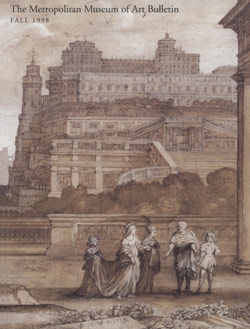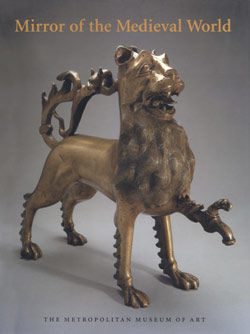Wing Brooch
This richly decorated brooch, wrought in silver, is an exceptional example of a type of brooch made in the Roman border province of Pannonia, on the Danube River. These objects are called "wing brooches" because of the winglike extensions that flank the knob at the bend of the bow. On this work, the knob is decorated with a zigzag pattern, and the two wings are adorned with two small knobs. A punchwork design extends from the knob along the length of the bow. As is typical of the few other surviving examples of this quality, the large, trapezoidal catch plate is covered with gold foil, except where it is pierced with elaborate patterns. Twisted gold wire laid down in wavy lines and scroll-and-heart motifs decorate the foil. Four carnelians frame the two intricate openwork patterns near the tip of the catch plate—one of linked circles and one of linked hearts. Rounded and rosette-shaped silver studs also ornament the surface. Except for minor losses to the gold foil, the brooch is complete and in excellent condition. On the basis of burial and pictorial evidence, wing brooches like this one were worn by women in pairs, on the shoulder, with the intricately pierced catch plates protruding above their robes, creating a relatively delicate, patterned effect.
Due to rights restrictions, this image cannot be enlarged, viewed at full screen, or downloaded.




